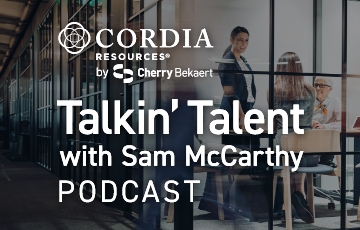On July 4, 2025, President Trump signed P.L. 119-21, Republicans’ “One Big Beautiful Bill,” into law. The sweeping domestic policy legislation reflects key elements of President Trump’s agenda, including the extension of existing and creation of new tax relief measures, changes to energy policy, increased funding for national defense and immigration enforcement, reductions in Medicaid and SNAP benefits, and an increase to the debt limit.
The tax provisions in P.L. 119-21 include the extension of many Tax Cuts and Jobs Act (TCJA) provisions, new tax relief measures, limitations on both individual and business deductions, changes to central international tax provisions and the curtailment of certain Inflation Reduction Act (IRA) incentives. Provisions have varying effective and expiration dates, with some, but not all, provisions enacted on a permanent basis.
The Joint Committee on Taxation (JCT) has projected the tax provisions contained in the legislation will reduce federal revenues over the next 10 years by $4.47 trillion when measured against current law and $715 billion when measured against current policy. When considering P.L. 119-21 in its entirety, it is estimated to increase total deficits by $3.4 trillion over 10 years, per the Congressional Budget Office. The bill also increases the federal government’s debt limit by $5 trillion.
Reconciliation Budget Bill Tax Provisions
The permanent extension of key business provisions was a top priority for several Senate Republicans. Accordingly, the final bill makes the following provisions permanent:
- Bonus Depreciation: The TCJA provided taxpayers with 100% additional first-year depreciation (bonus depreciation) expensing for qualified property through 2022, after which the benefit began to phase down by 20% each year; under the TCJA, the bonus rate for 2025 was 40%. Now, qualifying property placed in service from January 20, 2025, on is eligible for 100% expensing on a permanent basis. However, H.R. 1 provides taxpayers with the option to elect to use the TCJA’s 40% depreciation, rather than 100%, in 2025.
- Research & Experimental (R&E) Expenditures (Sec. 174): Domestic R&E expenditures paid or incurred in 2025 or after are now immediately deductible, reversing the previous requirement to capitalize and amortize them over five years. Small business taxpayers (those with average annual gross receipts of $31 million or less) have the option to apply the change retroactively back to 2022 through amended returns. All taxpayers who capitalized R&E expenditures from 2022 through 2024 have the option to accelerate their remaining, unamortized R&E capitalization over a one- or two-year period beginning in 2025. There was no change to the treatment of foreign R&E expenditures, which must be capitalized and amortized over 15 years.
- Business Interest Expense Limitation (Section 163(j)): Beginning in 2025, businesses will calculate their adjusted taxable income (ATI) based on earnings before interest, taxes, depreciation, and amortization (EBITDA), rather than the more restrictive earnings before interest and tax (EBIT). Businesses have been subject to the stricter threshold since 2022. H.R. 1 also imposes an ordering rule that requires the Sec. 163(j) limitation calculation before certain specific provisions in which interest is capitalized or deducted. Additionally, as of 2026, certain foreign income is excluded from the ATI calculation.
The final bill also made changes to numerous other provisions, including:
- Bonus Depreciation for Qualified Production Property (QPP): A new Sec. 168(n) provides taxpayers with an elective 100% depreciation deduction for QPP. QPP is depreciable real property that meets certain criteria for use in manufacturing, producing, or refining personal tangible property that is acquired between January 20, 2025, and the end of 2028 and placed in service before the end of 2030. There is a special acquisition rule that allows taxpayers to repurpose existing property to qualify for the deduction. Recapture rates for QPP are the ordinary income tax rate, not the lower Sec. 1250 rate.
- Section 179 Expensing of Certain Depreciable Assets: The final bill expands Sec. 179 expensing to a maximum of $2.5 million (up from $1.25 million). The phaseout threshold is reduced to the extent such property placed in service during the year exceeds $4 million (up from $3.1 million). This provision goes into effect in 2025, and amounts will be adjusted for inflation thereafter.
- Qualified Small Business Stock (QSBS, Section 1202) Expansion: QSBS stock acquired after July 4, 2025, is eligible for enhanced new treatment. The requirement to hold QSBS stock for five years before gains are eligible for exclusion has been expanded with a tiered system that allows owners to receive partial benefits once stock has been held for at least three years. Under the provision, taxpayers may exclude the following amount of gain based on their holding period:
|
Years |
Gain |
|
3+ |
50% |
|
4+ |
75% |
|
5+ |
100% |
Stock acquired after July 4, 2025, is eligible for the new treatment. The provision increases the exclusion cap from $10 million to $15 million and the aggregate gross asset limit for a corporation to qualify from $50 million to $75 million, indexed for inflation beginning in 2027.
- Compensation in Excess of $1 Million: Compensation payments in excess of $1 million to certain employees of publicly traded companies are disallowed under previous and current law. Beginning after 2025, this limitation has expanded to include compensation of employees of related party entities that are not public companies.
- One Percent Floor on Corporate Charitable Contributions: H.R. 1 further limits corporate charitable contributions by instituting a new 1% floor, beginning in 2026. Corporations can claim a charitable contribution deduction only to the extent it exceeds 1% of taxable income and does not exceed 10% of taxable income. Amounts disallowed under the 1% floor can only be carried forward in years in which the corporation's contributions exceed the 10% limit; otherwise, the first 1% of contributions are permanently disallowed.
- Exception to the Percentage of Completion Method of Accounting: Only certain contracts are eligible to use a method other than the percentage of completion method (PCM) when accounting for sales. For contracts entered into after July 4, 2025, the exceptions have changed. The exception for “home construction contracts” has been broadened to “residential construction contracts,” which will allow builders of multi-family homes, including apartments and condos, to opt out of PCM. Additionally, the time requirement for other contracts for small business taxpayers has increased from two to three years.
- Change to Real Estate Investment Trust (REIT) Threshold: H.R. 1 eased the limitations for the REITs ownership of securities of taxable REIT subsidiaries from 20% to 25%.
After more than a year of discussion on Capitol Hill of terminating the Employee Retention Credit (ERC) and beefing up enforcement mechanisms, Congress passed a provision that makes the following changes to the beleaguered program:
- Early Termination of ERC: Credits filed for the third and fourth quarters (Q3 and Q4) of 2021 that have not been allowed or paid prior to July 4, 2025, are only eligible for payment if they were filed on or before January 31, 2024. The IRS currently has a moratorium on processing these claims.
- ERC Enforcement: The assessment time period for Q3 and Q4 2021 claims has been extended to six years after the date the claim is made, and the time for adjusting deductions for wages used to calculate the claim has also been extended to the same six years. ERC promoters are required to comply with due diligence requirements or face a $1,000 penalty for each failure to comply with respect to aid, assistance and advice provided after July 4, 2025, for any ERC claim.
Finally, there are several provisions that incentivize employers to provide certain benefits to their employees including:
- A permanent extension and several favorable changes to the paid family and medical leave credit
- An increase in an employer credit for providing a childcare facility and resources for employees and creation of an increased credit for small businesses for these expenses
- An increase to $7,500 from $5,000 for the income tax exclusion for dependent care assistance
H.R. 1 made a few meaningful changes to provisions that impact pass-through entities and their owners, including:
- Qualified Business Income (QBI, Section 199A) Deduction: H.R. 1 permanently extends the 20% QBI deduction and increases the phase-in range, providing a $75,000 phase-in range for single filers and a $150,000 phase-in range for joint filers. It also creates a $400 minimum deduction for small taxpayers who have at least $1,000 of qualifying income.
- Excess Business Loss (EBL) Limitation: The Sec. 461(l) EBL limitation, currently set to expire at the end of 2028, was made permanent. The limitation, set at $250,000 ($500,000 MFJ), has grown with inflation since its enactment to $313,000 ($626,000 MFJ) in 2025. H.R 1 resets this threshold back to $250,000 ($500,000 MFJ), which will be indexed for inflation going forward. The lowered threshold doesn’t take effect until 2026 (though it is tied to 2025 for inflation adjustment purposes). Unlike the original House and Senate proposals, the final bill did not change the treatment of disallowed losses; they will retain their current treatment as net operating losses (NOLs), continuing to effectively serve as a one-year deferral.
Despite proposals from both the House and the Senate to limit existing pass-through entity tax (PTET) structures, the final bill did not contain any PTET provisions.
One of the key developments during final negotiations was the announcement of a deal between the U.S. and other G7 countries that would create a “side-by-side” system that exempts U.S. companies from key elements of the Organization for Economic Co-operation and Development’s (OECD) global minimum tax. This agreement was in exchange for the U.S. abandoning the Section 899 retaliatory tax provision that was included in both the original House and Senate proposals.
The final bill altered three central international tax provisions:
- Global intangible low-taxed income (GILTI)
- Foreign-derived intangible income (FDII)
- Base erosion and anti-abuse tax (BEAT)
|
Current |
Deduction Percentage |
Deduction Percentage |
|
|
GILTI |
50% |
40% |
37.5% |
|
FDII |
37.5% |
33.34% |
21.875% |
|
Current Rate |
Rate Under H.R. 1 |
Rate if TCJA had Expired |
|
|
BEAT |
10% |
10.5% |
12.5% |
- GILTI Regime: In addition to increasing the rate, GILTI is altered by removing the reduction for qualified business asset investment (QBAI), essentially creating a minimum tax on all controlled foreign corporation (CFC) income, beginning in 2026. Accordingly, GILTI will also be renamed to “net CFC tested income” (NCTI). H.R. 1 also implements a 90% foreign tax credit for net CFC tested income and limits the allocation and apportionment of expenses to GILTI to Sec. 250(b)(2) deductions and expenses directly allocable to GILTI income; any other expenses will be allocated to U.S. source income. Together, these changes result in an effective tax rate of 12.6% beginning in 2026.
- FDII Regime: The new regime changes its name to foreign-derived deduction eligible income (FDDEI) in recognition of a movement away from its primary policy of encouraging the migration of intangibles to the United States. It accomplishes this by eliminating the reduction that attempts to tie benefits to intangible income by subtracting a measure of tangible income from total eligible income (the 10% QBAI reduction). Although the new FDDEI deduction is reduced to 33.34%, the elimination of the QBAI reduction could be net favorable for tangible asset-heavy companies. These changes result in an effective tax rate of 14% beginning in 2026. H.R. 1 also denies FDDEI benefits for the export of intangible property, whereas income from intangibles such as patents or know-how (as defined in Section 367(d)(4)), which is transferred after June 16, 2025, will no longer receive the same subsidy as the export of machinery. Additionally, taxpayers will only be required to allocate and apportion directly related expenses into DEI.
- BEAT: Effective in 2026, the BEAT rate will increase from 10% to 10.5%. BEAT will retain the current treatment of certain credits (i.e. the research credit) that reduce the BEAT tax base. All changes to BEAT are permanent.
H.R. 1 bill makes numerous other changes to international tax provisions, effective in 2026, including:
- Treats income from a U.S. person from the sale of inventory produced in the U.S. and attributable to an office or other fixed place of business outside the U.S. as foreign source, up to 50% of the total taxable income from such sale, for purposes of calculating the FTC limitation
- Makes the CFC look-through rule permanent
- Reinstates Sec. 958(b)(4) to preclude downward attribution from a foreign person to a U.S. person in determining CFC status (a change that will be welcomed by the international tax community)
- Excludes subpart F and GILTI, along with any associated gross up under Sec. 78, from the calculation of ATI for the business interest expense limitation calculation
Extending the expiring TCJA individual provisions was one of the primary objectives of the reconciliation bill, and the most expensive portion of the tax package. Many existing provisions were permanently extended, though some were slightly altered in the process. Other provisions, particularly Trump’s 2024 campaign proposals, were enacted temporarily — setting up another potential tax cliff at the end of 2028.
The following individual provisions have been permanently extended and/or altered.
|
Provision |
New Treatment |
|
Individual Tax Rates & Brackets |
Permanently extends current tax brackets and rates, which will continue to be indexed for inflation, and provides an extra year of inflation adjustment for the 10% and 12% brackets. |
|
Standard Deduction |
Permanently increases the standard deduction to $31,500 married filing jointly (MFJ), $23,625 head of household (HoH), and $15,750 for single filers beginning in 2025. Amounts are indexed for inflation thereafter. |
|
General Treatment of Itemized Deductions |
Permanently extends TCJA’s limitations on itemized deductions, including miscellaneous itemized deductions (other than educator expenses), casualty losses, moving expenses, mortgage interest, etc. |
|
Limitation on Itemized Deductions |
The pre-TJCA Pease limitation on itemized deductions is permanently repealed; however, H.R. 1 creates a new overall limitation that applies to taxpayers in the highest tax bracket (37%), capping the tax benefit of each deduction at 35%. The new limitation goes into effect in 2026. |
|
Personal Exemptions |
Personal exemptions permanently set to $0 |
|
Alternative Minimum Tax (AMT) |
The AMT’s increased exemption and phaseout threshold are permanently extended; however, the $1 million phaseout, which has grown to over $1.2 million in 2025, is reset to $1 million in 2026 and adjusted for inflation thereafter. The rate at which the exemption is phased out once a taxpayer reaches the threshold increases from 25% to 50%. |
|
Child Tax Credit (CTC) |
The CTC increases from $2,000 to $2,200 in 2025; however, the refundable portion remains $1,700. Both the CTC and refundable portion are subject to inflation adjustments beginning in 2026. The $200,000 ($400,000 MFJ) threshold for claiming the CTC and the $500 nonrefundable credit for other dependents are made permanent, though neither will be adjusted for inflation. |
|
Child and Dependent Care Tax Credit (CDCTC) |
The CDCTC’s maximum credit rate increases from 35% to 50% and the income thresholds are significantly expanded. These changes are effective as of 2026. |
|
Treatment of Charitable Contributions |
Beginning in 2026, taxpayers will have two avenues for deducting charitable contributions. Non-itemizers will be able to deduct up to $1,000 ($2,000 MFJ) of qualifying cash contributions. Taxpayers who itemize will face a new floor of 0.5% before charitable contributions become deductible. |
|
Scholarship Granting Organizations (SGO) Tax Credits |
Taxpayers making qualifying cash contributions to SGOs are eligible for a new 100% tax credit of up to $1,700 per year. |
|
Employer Provided Educational Assistance |
Under H.R. 1 employees can continue to receive up to $5,250 tax-free from their employer to pay or reimburse principal and interest for student loans. Beginning after 2026, all educational assistance program benefits, including tax free student loan repayment, will be indexed for inflation. |
|
529 Accounts |
The list of qualified education expenses for elementary and secondary schools is expanded to include more types of expenses, such as tutoring and online educational materials, with the annual limit increased from $10,000 to $20,000. Postsecondary credentialing expenses can also be funded with these accounts. |
|
ABLE Accounts |
H.R. 1 makes several ABLE provisions permanent including the additional contribution amount, access to the Saver’s Credit, and tax-free rollovers from 529 plans. |
|
Wagering Losses |
Beginning in 2026, “losses from wagering transactions” will be limited to 90% of such losses. This limitation is in addition to the pre-existing limit of claiming wagering losses only to the extent of wagering gains. |
|
Adoption Credit |
Beginning in 2025, up to $5,000 of the adoption credit is refundable. |
The SALT Cap
The cap on individual state and local tax (SALT) deductions was one of the most challenging provisions to craft. A handful of SALT caucus members, moderate House Republicans from purple districts in high-tax states, insisted on SALT relief, a priority for their districts. Meanwhile, more conservative House members and Republican senators pushed back against what they viewed as an expensive gift to blue states.
Ultimately, the SALT caucus was able to secure a deal that provides taxpayers with a $40,000 cap ($20,000 for married filing separately or MFS). The higher limit begins to phaseout when taxpayers reach a $500,000 income threshold ($250,000 for MFS). The phaseout is fairly aggressive — a reduction rate of 30% of income exceeding the threshold; however, the deductible amount cannot be reduced below the current cap of $10,000.
The increased SALT cap is only in place for tax years 2025 through 2029, with the cap and threshold amounts increasing 1% each year from 2026 through 2029. Unless Congress acts to extend the higher cap, it will revert back to the current $10,000 ($5,000 MFS) level beginning in 2030.
Importantly, as we noted above in the pass-through entity provisions section, there was no change to the PTET regime.
Additional Individual Changes
H.R. 1 also delivers on a number of Trump’s campaign promises, albeit temporarily, including:
- No Tax on Tips: H.R. 1 provides a deduction for qualified tips received by a taxpayer in an occupation that customarily receives tips. The deduction is capped at $25,000 per year and begins to phaseout once a taxpayer’s income exceeds $150,000 ($300,000 MFJ). This provision is in effect for tax years 2025 through 2028.
- No Tax on Overtime: Qualified overtime income is deductible, up to $12,500 ($25,000 MFJ), for tax years 2025 through 2028. The benefit begins to phaseout once a taxpayer's income exceeds $150,000 ($300,000 MFJ).
- Additional Deduction for Seniors: From 2025 through 2028, taxpayers aged 65 and older are eligible to receive a deduction of $6,000 per taxpayer. The benefit begins to phaseout once taxpayer income exceeds $75,000 ($150,000 MFJ).
- Car Loan Interest Deduction: For tax years 2025 through 2028, taxpayers may deduct up to $10,000 of car loan interest annually. The deduction applies to interest on loans to acquire vehicles assembled in the U.S. This benefit begins to phaseout once taxpayer income exceeds $100,000 ($200,000 MFJ).
Finally, there are a few other notable individual changes included in H.R. 1:
- Disaster-Related Personal Casualty Losses: H.R. 1 provides taxpayers with an extension of time to claim federally declared disaster-related personal casualty losses, without having to itemize deductions. Previously this benefit expired for disasters occurring after January 11, 2025, and which were declared as federal disasters after February 10, 2025. Now, the tax benefit for disaster losses is extended for presidentially declared disaster areas for major disasters declared on or after January 1, 2020, through August 3, 2025. Additionally, the new law expands eligibility for casualty loss deductions to include certain state declared disasters.
- Trump Accounts: H.R. 1 creates tax-exempt accounts for children called Trump accounts. Contributions are limited to $5,000 per year, indexed for inflation, until the beneficiary reaches the age of 18, in which case no further contributions can be made. An employer can also make contributions of up to $2,500, indexed for inflation, for employees or children of employees. Those contributions must be nondiscriminatory but are not taxable to the employee or the child. In addition, tax-exempt organizations can make contributions for classes of children and individuals can elect to have the IRS make a $1,000 contribution for children who are U.S. citizens born in 2025, 2026, 2027 or 2028. Trump accounts are treated as individual retirement accounts (IRAs) but are considered separate from the child’s IRA. They need to be invested in a mutual fund or exchange-traded fund that tracks the returns of a qualified index such as the S&P 500 or other equity index comprised of equity investments in U.S. companies that charge low fees. Thus, amounts can accumulate until the child reaches the age of 75, the required minimum distribution age.
H.R. 1 extends and enhances the estate and gift tax exemption amount — increasing it to $15 million for each taxpayer ($30 million combined for married couples). The new threshold takes effect in 2026 and is indexed for inflation in subsequent years.
The tax rates and brackets for trusts and estates are also permanently extended.
H.R. 1 made three key changes to community development provisions:
- Opportunity Zones (OZs): H.R. 1 established a permanent OZ program, with rolling 10-year OZ designations. The new OZs will be established July 1, 2026, and will be effective January 1, 2027. Taxpayers that invest in OZs will be eligible for the following benefits:
- A temporary deferral of tax on the deferred gain until the earlier of the date when the investment is sold or exchanged, or five years after the date of the investment
- An increase in basis of 10% of the deferred gain for property held for at least five years (this jumps to 30% for certain investments in qualified rural opportunity funds), and
- Permanent exclusion of new gains on OZ property held for at least 10 years and special rules for investments held for over 30 years, and
- For existing structures in rural areas — a reduction of the required investment in existing structures from 100% to 50% of the building’s basis.
The provision also narrows the definition of a low-income community to 70% of the state-wide median income threshold or 70% of the metropolitan area’s median family income threshold (if the census tract is in a metropolitan area).
- Low-Income Housing Tax Credit (LIHTC): The state housing credit ceiling for the LIHTC has been permanently increased by 12%. In addition, the private activity bond financing threshold has been lowered to 25% starting in 2026, allowing more projects to qualify for tax-exempt bond financing.
- New Markets Tax Credit: H.R. 1 makes the New Markets Tax Credit, which was previously set to expire at the end of 2025, permanent.
The final bill contained a few changes relevant to tax-exempt organizations:
- Expansion of Excise Tax on Investment Income of Certain Private Colleges and Universities: H.R. 1 increases the top excise tax rate from a flat 1.4% to a graduated structure with a top rate of 8% for applicable educational institutions. Applicable eligible institutions are those that meet certain criteria, including having at least 3,000 tuition-paying students, at least half of whom are located in the U.S., and a student-adjusted endowment of $500,000 or more.
|
Student |
Excise |
|
$500,000 – $749,000 |
1.4% |
|
$750,000 – $1,999,999 |
4% |
|
$200,000,000 |
8% |
- Scholarship Granting Organizations (SGOs): In the individual section above, we discuss a 100% credit available for donations to SGOs. SGOs must use the contributions to fund scholarships for eligible students and will be subject to a number of conditions, including accounting, distribution and reporting requirements.
- Expansion of Tax on Excess Compensation: Excess remuneration, generally in excess of $1 million annually, paid to a “covered employee” of a tax-exempt organization is subject to an excise tax. Previously, the definition of a “covered employee” had been somewhat narrow; H.R. 1 expands the definition to any employee that receives remuneration in excess of $1 million, effective in 2026.
The final bill did not include an increase on the excise tax on net investment income of private foundations.
Modifications to IRA provisions in the final legislation were generally consistent with the Senate’s original proposal. Trump reportedly won over House conservatives who opposed this approach by promising executive action to strictly enforce new wind and solar projects. At the time of publication, no executive actions had yet been issued.
In addition to new termination and phaseout timelines, several IRA credits face new foreign entity of concern (FEOC) restrictions. The chart below summarizes the changes to IRA business credits.
|
Code |
Incentive |
New |
FEOC |
|
48E |
Clean Energy Investment Credit |
Terminated for solar and wind facilities placed in service after December 31, 2027, that begin construction more than 12 months after enactment. Credit maintained for other technologies through 2033. |
Yes |
|
45Y |
Clean Energy Production Credit |
||
|
45U |
Zero-Emission Nuclear Power Production Credit |
Unchanged — credit allowed through December 31, 2032. |
Yes |
|
45Q |
Carbon Sequestration Credit |
Credit amount for utilization of captured carbon increased to match that for carbon sequestration. |
Yes |
|
45X |
Advanced Manufacturing Production Credit |
Terminated for wind components sold after December 31, 2027. Critical minerals other than metallurgical coal phaseout beginning in 2031. |
Yes |
|
45Z |
Clean Fuel Production Credit |
Extended for fuel sold prior to 2030. |
Yes |
|
45W |
Commercial Clean Vehicles Credit |
Terminated for vehicles acquired after September 30, 2025. |
No |
|
45V |
Clean Hydrogen Credit |
Terminated for facilities that begin construction after December, 31,2027. |
No |
|
45L |
New Energy Efficient Homes Credit |
Terminated for new energy-efficient homes acquired after June 30, 2026. |
No |
|
30C |
EV Charging Station Credit |
Terminated for property placed in service after June 30, 2026. |
No |
|
179D |
Energy Efficient Commercial Buildings Tax Deduction |
Terminated for properties beginning construction after June 30, 2026. |
No |
The final bill also increased the credit rate of the advanced manufacturing investment credit from 25% to 35% beginning in 2026.
Finally, H.R. 1 bill made drastic changes to individual energy provisions, terminating the following credits:
| Code Section | Credit | Termination Date |
|
25E |
Previously Owned Clean Vehicle Credit |
Vehicles acquired after September 30, 2025. |
|
30D |
Clean Vehicle Credit |
Vehicles acquired after September 30, 2025. |
|
25C |
Energy Efficient Home Improvement Property |
Property placed in service after December 31, 2025. |
|
25D |
Residential Clean Energy Credit |
Expenditures made after December 31, 2025. |
H.R. 1 contains a number of other notable provisions, including:
- Debt Limit: H.R. 1 increases the debt limit by $5 trillion. This amount is likely to provide enough borrowing capacity to get through the 2026 midterm elections.
- Foreign Remittance Tax: A new 1% excise tax on certain foreign transfers of funds, to be paid for by the sender, will go into effect in 2026. There are exceptions for transfers from certain financial institutions and those funded with a debit or credit card issued in the U.S.
- IRS Direct File Program: H.R. 1 allocated $15 million to the Treasury to establish a task force to examine the cost of establishing public-private partnerships to provide free tax filing services for up to 70% of individual taxpayers and replace the IRS Direct File program.
- Forms 1099-K and 1099-MISC/NEC: The de minimis reporting exemption for third-party settlement organizations (reported on Form 1099-K) reverts from $600 back to the level of $20,000 and 200 transactions for any payee and is retroactively effective back to the date of the original change. The reporting threshold for payments (other than dividends, interest, and royalties) made by persons engaged in a trade or business (reported on Forms 1099-MISC/NEC) will rise from $600 to $2,000 for payments made after 2025 and will be adjusted for cost-of-living increases.
The final bill did not include the previously proposed changes to the Interstate Income Act of 1959 (often referred to as P.L. 86-272).
Next Steps for Taxpayers
Taxpayers should consult their tax advisor to analyze the impact P.L. 119-21 will have on their tax position and explore planning strategies. Additionally, taxpayers should evaluate the impact changes have on their current financial statement positions.
Your Guide Forward
To learn more about how the final reconciliation bill could impact your business or individual tax situation, reach out to a knowledgeable Cherry Bekaert tax advisor.
View Our Insightful Webinars
Please view Cherry Bekaert's for our webinar series Tax Horizons: Planning Ahead After the Reconciliation Bill webinar series, that explored the reconciliation bill in more detail and with insights that will help you adjust to changes in the tax landscape.
Sessions:
- Beyond the Bill: Tax Insights for the 2025 Reform
- Your Financial Legacy: Key Individual and Estate Tax Shifts
- Business Tax in Motion: Navigating Key Corporate and PTE Developments
- New Global Playbook: International Game Changers
- From Capitol to County: State & Local Tax in Focus
Related Insights
- Article: Trump's Tax Bill: Bonus Depreciation & Cost Segregation in 2025
- Article: Opportunity Zones Reimagined: How the 2025 Tax Reform Resets the Landscape for Community Investment
- Article: How the 2025 Tax Reform Expands LIHTC and Reshapes Affordable Housing Investment Strategy
- Article: 2025 Tax Reform: Understanding the Federal Education Tax Credit Program
- Article: Tax Policy Review: August 2025
- Webinar Recording: Beyond the Bill: Tax Insights for the 2025 Reform






